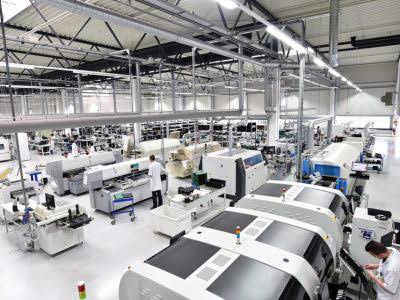Periodic vs Perpetual Inventory System Definitions, Benefits, Examples
Каким способом можно определить себе добросовестное а также рентабельное игорный клуб пин ап казино в сети интернет
August 19, 2024Азартные аппараты Megaways в kazino Гет Икс в интернете
August 20, 2024Periodic vs Perpetual Inventory System Definitions, Benefits, Examples

He managed a box plant, and the massive rolls of paper that would later become boxes needed to be counted for that period’s inventory accounting. Traditional or manual inventory systems, where inventory activities are managed manually and information is stored on paper, are sometimes referred to as physical inventory systems. However, this term is not entirely accurate, as it implies that these systems directly reflect the physical inventory at hand. In the perpetual inventory management system, continuous inventory updates and real-time data unleash opportunities and help to grow a sustainable business. In specific identification, businesses are entered goods with a unique identification like batch or lot number and keep records of which goods are left based on its identification number. In this way, you easily manage expired dates and can minimize spoilage for both expirable and perishable goods because here you ensure sales that products will expire fast or rot first.
Selecting Inventory Management Software for Canadian Retailers
- The commencement of the subsequent accounting period subsequently starts with the data for the ending inventory.
- Companies that lack the resources or do not want to spend a lot of money on implementing a more intricate inventory accounting system are also advised to use the system.
- “The terms ‘periodic inventory system’ and ‘physical inventory’ are often used interchangeably, but they have distinct meanings.
- An additional entry that is related to the periodic inventory system, but which does not directly impact inventory, is the sale transaction.
- But a company using a periodic inventory system will not know the amount for its accounting records until the physical count is completed.
- For businesses with a single location or few product lines, a periodic inventory system can do the job.
- In the perpetual inventory system, we record our purchases in the Inventory account rather than the Purchases account.
Continuing from the above example, if the business has an ending inventory of $50,000, its COGS is $200,000 for the period. The cost of goods sold includes elements like direct labor and materials costs and direct factory overhead costs. Business owners subtract the cost of goods sold from total revenue to get their gross profit, which is a measurement of the business’s profitability. Unless you have very few inventory transactions and do not even plan to expand.
Periodic Inventory vs. Perpetual Inventory
In addition, you may use it to spot any stock flaws and take the appropriate action instantly. Smaller companies that don’t retain a lot of stock in their inventory are best suited for a periodic inventory https://x.com/BooksTimeInc system. Estimating the cost of commodities sold over predetermined periods is likewise much simpler. In this system, all the purchases made during physical counts get recorded in the purchase account.

Perpetual vs. periodic: How to select the right method for your business
An additional entry that is related to the periodic inventory system, but which does not directly impact inventory, is the sale transaction. The following entry shows the transaction that you record under a periodic inventory system when you sell goods. There is not a corresponding and immediate decline in the inventory balance at the same time, because the periodic inventory system only adjusts the inventory balance at the end of the accounting period.
- He has been the CFO or controller of both small and medium sized companies and has run small businesses of his own.
- A financial professional will offer guidance based on the information provided and offer a no-obligation call to better understand your situation.
- The periodic inventory approach was very well-liked before technology accounting solutions were introduced.
- Read on to learn about periodic inventory and its younger brother, the perpetual inventory system.
- Even though it is a reasonable choice for companies juststarting out, it has some disadvantages that could become issues in the longrun.

The periodic inventory system updates the general ledger account Inventory at the end of the period. Perpetual inventory systems are generally considered more accurate because they reflect real-time inventory levels. Periodic systems can have discrepancies due to shrinkage (like theft or damage) that occur between counts.
Myth: Perpetual inventory systems are expensive and difficult to implement
With periodic inventory, however, there’s no way to account for these unexpected changes. A physical inventory count when a periodic inventory system is used, is also done to determine the period’s ending inventory balance during this time. The amount of ending inventory is then carried over as the next period’s beginning inventory.

A perpetual approach gives a more detailed and current oversight of both stock and COGS, allowing companies to make business decisions based on up-to-date information and stock levels. Good examples where a periodic inventory would be suitableare motor vehicle dealerships, art galleries, haute couture makers, and otherlow-volume producers and sellers. If you don’t need that sort of timeliness and can take the time each month to count inventory, go with periodic. Cost of goods sold is calculated using the FIFO method, and inventory is decreased by that amount.
- During the physical count, FitTees found that there were 225 units of designer shirts and 354 units of jeans on hand.
- Inventory that is only managed on the cloud can more easily disappear and end up being sold out of the back of a truck somewhere.
- Some small businesses may also choose the periodic system because of its affordability.
- A physical inventory count requires companies to do a manual “stock-check” of inventory to make sure what they have recorded on the books matches what they physically have in stock.
- The main advantage of a perpetual inventory system is that it provides real-time visibility into inventory levels, allowing businesses to make more informed decisions about inventory management.
Materials and Methods
The new purchases or transactions are added during the period and later at the end of the said period, deduction of the final of ending stocks is done to get the Cost of Goods Sold (COGS). The journal entries below act as a quick reference, and set out the most commonly encountered situations when dealing with the double entry posting under a periodic system. When manufacturing is finished, the final cost of thefinished products is moved from the work in progress account to a finishedgoods inventory account. When goods are purchased, they are accounted for in a purchases account, https://www.bookstime.com/articles/contra-expense which shows the sum of all purchases during the period. If inventory is central to your business, it must be managed, and to do that it, must be measured. Using perpetual inventory, you’re able to track and manage inventory as transactions happen, buying more inventory when necessary and zeroing in on the best prices.

Periodic inventory management vs. perpetual inventory management

If inventory is a key component of your business, and you need to manage it daily or weekly to make new orders and keep up with demand, use perpetual inventory accounting. When new inventory is purchased, it goes directly into the inventory account, and there is no closing entry. Cost of goods sold is increased, and inventory is decreased the instant that inventory is sold.
